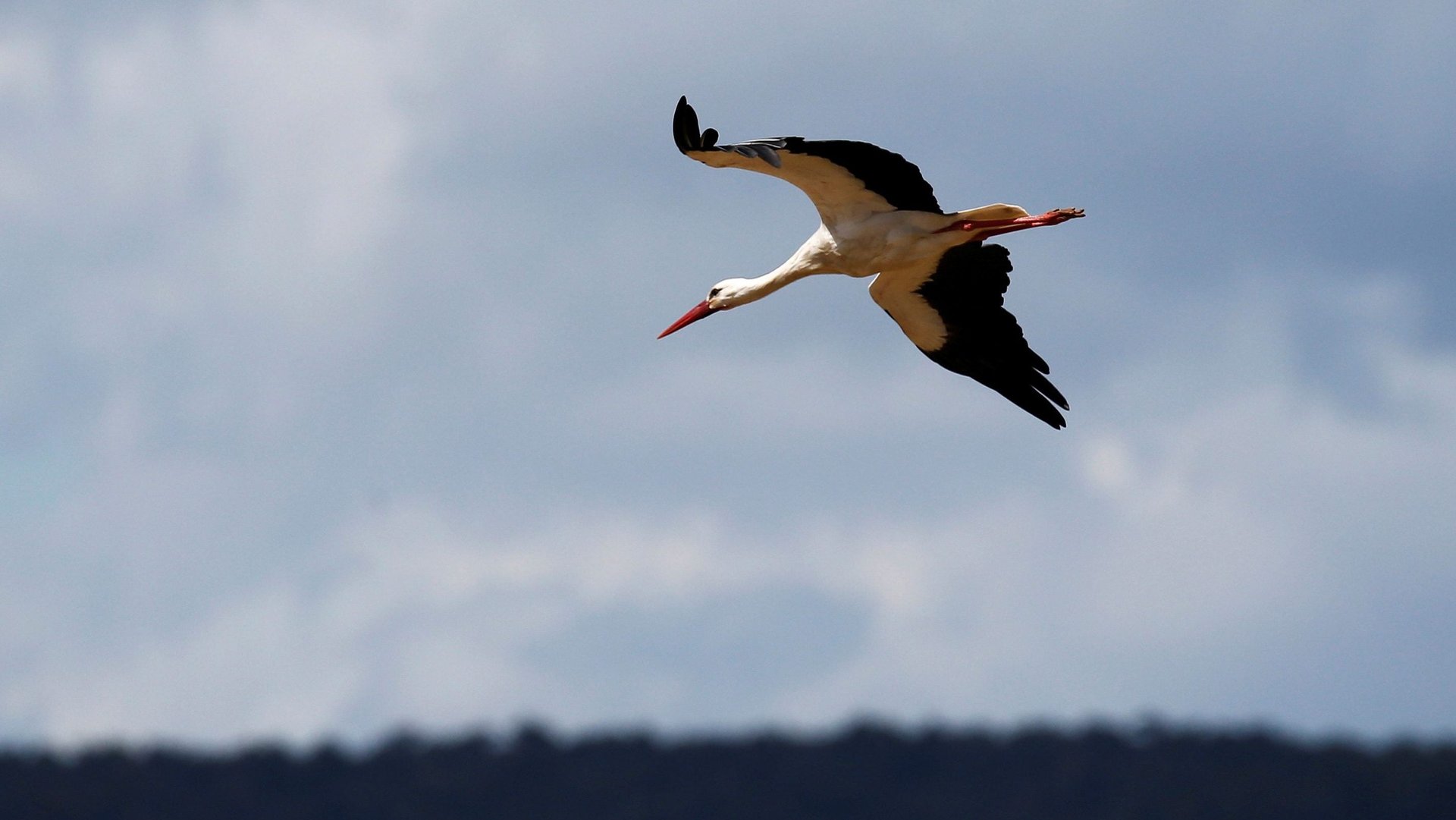Stork leaders know how to get further with less effort than their followers
Humans often extol the necessity of hard work in getting ahead. But stork leaders are a little different—they manage to get further with less flapping than other storks, new research shows.


Humans often extol the necessity of hard work in getting ahead. But stork leaders are a little different—they manage to get further with less flapping than other storks, new research shows.
Every winter, white storks fly south from Europe to Africa. With the help of GPS trackers attached to the backs of a group of 27 juvenile storks flying together, scientists from Germany’s Max Planck Institute for Ornithology and the University of Konstanz studied the social dynamics at play in long migratory flights over four years. Their research, published in Science on Friday (May 25), found noticeable differences in flying patterns within the flock.
They noticed that some of the storks had lower flapping activity and usually flew ahead of their peers, leading the scientists to dub these storks leaders. The leaders led the way in navigating to the rising columns of warm air, or thermals, that help migratory birds cover more distance while expending less energy. While flying in these warm pockets, leaders also constantly adjusted their paths, their irregular circling showed, to explore them. Followers benefited from this exploration, but appeared not to be able to take full advantage of the lift, flying more slowly and losing altitude faster when traveling to the next thermal. “To avoid falling behind the group, they must flap their wings more and leave the thermals before reaching the top,” said Máté Nagy, who analyzed the GPS data for the study.
As a result, there were also considerable differences in how far the birds traveled. Some birds traveled several thousand kilometers, while others remained within Europe. The tracking showed birds who were the most efficient in flapping traveled further. “A stork’s route and destination depend, among other things, on how efficiently it can fly,” said Martin Wikelski, an author of the study and a director at the Max Planck Institute for Ornithology based in the southern German town of Radolfzell.
If storks have their leaders, they also have those who are giving up on the challenging journey, perhaps for the bird equivalent of YOLO.
Instead, they forage from human landfills, where leftovers provide the birds enough food to last the winter. It’s a departure from their usual diet of insects and spiders, but might not actually be bad for the species, according to a study. Storks who stay put for the winter could start breeding earlier in the season and raise more chicks per nest–but it’s unclear what that the consequences of this atypical diet may be.